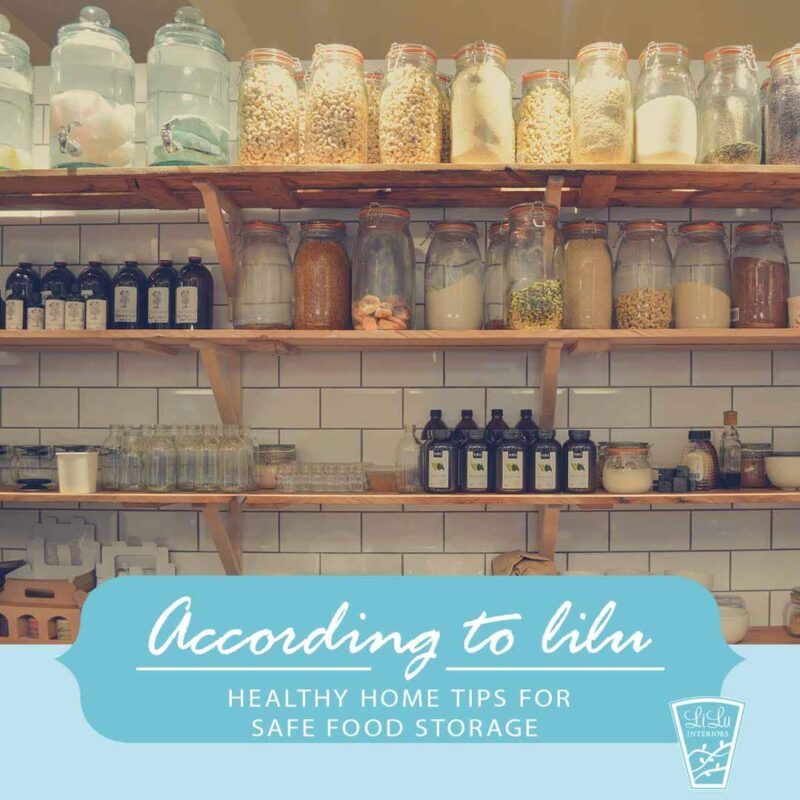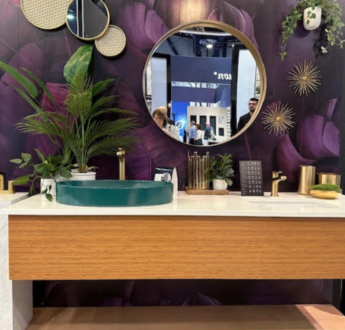Healthy Home Tips – Safe Food Storage Products
Safe Food Storage has been one thing that has increasingly been popping up in stores, on the television, social media, and the internet...probably even with conversations with your family and friends. The biggest reason this has become a concern is that the products that store our food and drink can and are leaching out their chemicals into our food and drink and then guess what...we digest that! It enters our bodies and can cause damage and illness. The other important factor is how bad their are for our environment. Single use plastic such as plastic bags, silverware, plastic containers, saran plastic wrap are all used once and then tossed into the recycling or trash. Most plastic is ending up in our oceans and is affecting sea life.
The good news!
There are awesome and stylish safe food storage containers and wraps out there. We have done the research and education for you so take a look, click on the links to read more and do some shopping.
My rule of thumb is to change out one area at a time. This will eliminate going over budget, or feeling overwhelmed about where to begin and then not starting at all. So, one month change out your plastic bags. The next or a few months down the line look into alternatives for plastic wrap. It is about progress, not perfection. Do what you can and what you can afford. It may take a year or two to completely change it all and that is ok.
So, take a look at some new solutions for food storage as well as some fun tips! Together we can make a difference for our Planet, for each other and for our health!
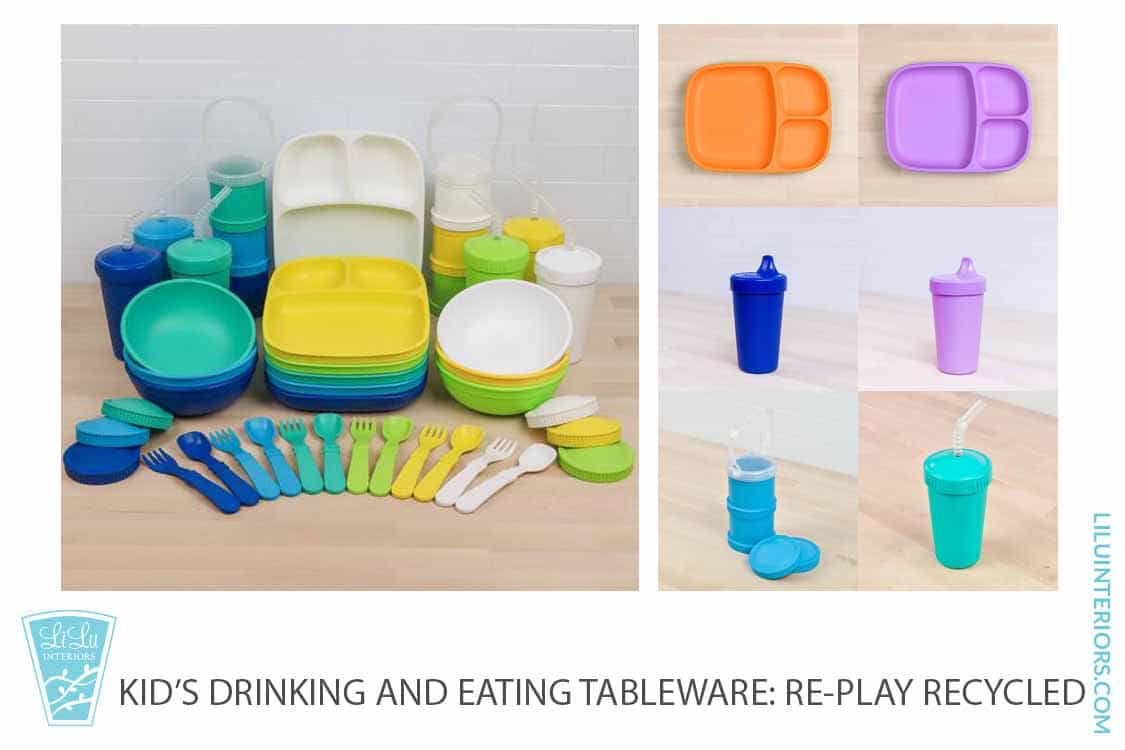
Re-Play's No-Spill Sippy Cups
These are perfect for kids on the go. All Re-Play is made from FDA approved sustainable HDPE recycled plastic or recycled polypropylene. Not only are they better for your child, they are better for your environment! The one piece, easy clean silicone valve keeps your toddler's milk or juice leak-free.
Mix and match our Cups with our utensils, plates, and bowls to create a vibrant tableware set!
- Made in the USA from FDA Approved Recycled Milk and Recycled Polypropylene by our Family Owned & Operated Company
- We save one Milk Jug from the landfill EVERY 6 seconds - Strong, Sustainable, Safe HDPE plastic!
- BPA, Phthalate, PVC and Melamine FREE - Safer for your Child and Safer for our Environment.
- Tested Dishwasher and Microwave Safe**
- Our patented easy clean one piece Silicone valve makes clean up a snap for busy Moms
- Threaded lids closes securely ensuring there are no leaks or spills
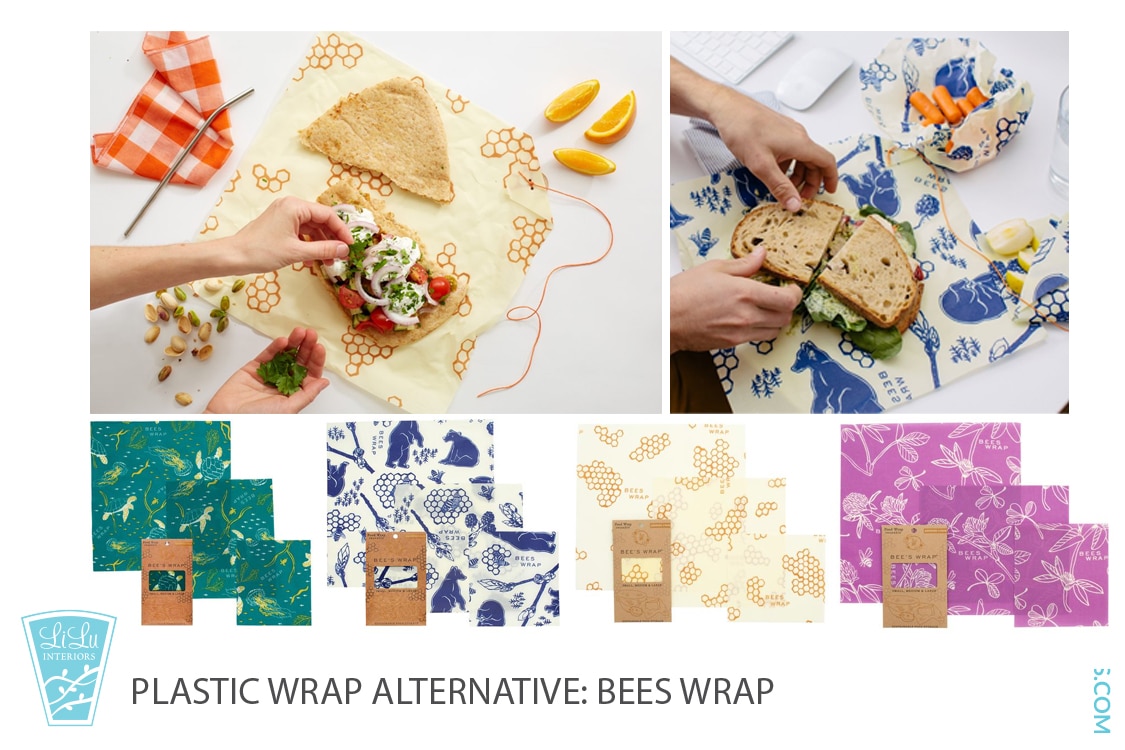
Alternative to Saran Wrap
“Bee’s Wrap was founded in 2012 by Vermonter Sarah Kaeck, a mother of three who has been, by turns, an avid gardener, milker of goats, keeper of chickens, and seamstress. Bee’s Wrap started with a question facing many families and home cooks: How could we eliminate plastics in our kitchen in favor of a healthier, more sustainable way to store our food?
What she discovered is a lost tradition made new again. By infusing organic cotton with beeswax, organic jojoba oil, and tree resin, she created a washable, reusable, and compostable alternative to plastic wrap.”
What makes Beeswrap safer?
Our beeswax is never chemically altered or bleached and is tested by the USDA for 200 pesticides and herbicides, ensuring the use of the cleanest possible wax. The beekeepers with whom we work are on the front lines of supporting a healthy, vibrant pollinator population.
Bee's Wrap is made of GOTS-certified organic cotton, sustainably sourced beeswax, organic jojoba oil, and tree resin. This combination of ingredients creates a malleable food wrap that can be used again and again.
How to care for it?
Care: Wash your Bee’s Wrap in cool water with a mild dish soap. (Avoid sources of heat, such as hot water and microwaves.) Air dry, fold and store in a drawer or in a basket on the counter. The beeswax and jojoba oil have antibacterial qualities that help to keep your food fresh and allow you to use the Bee's Wrap again and again.
Time: Bee's Wrap lasts for up to a year with proper care and regular usage. You'll know your wrap has reached the end of its useful life in the kitchen when it has worn thin and soft and has trouble sticking to itself. At this time, you can cut your wrap into strips and add to your compost pile, or use as a natural and effective fire starter.
Bee's Wrap keeps food fresh in the freezer for 2-3 weeks. Since your wraps are naturally breathable, we recommend you check on your food after this time to ensure its freshness. Great for freezing pizza dough and baked goods.
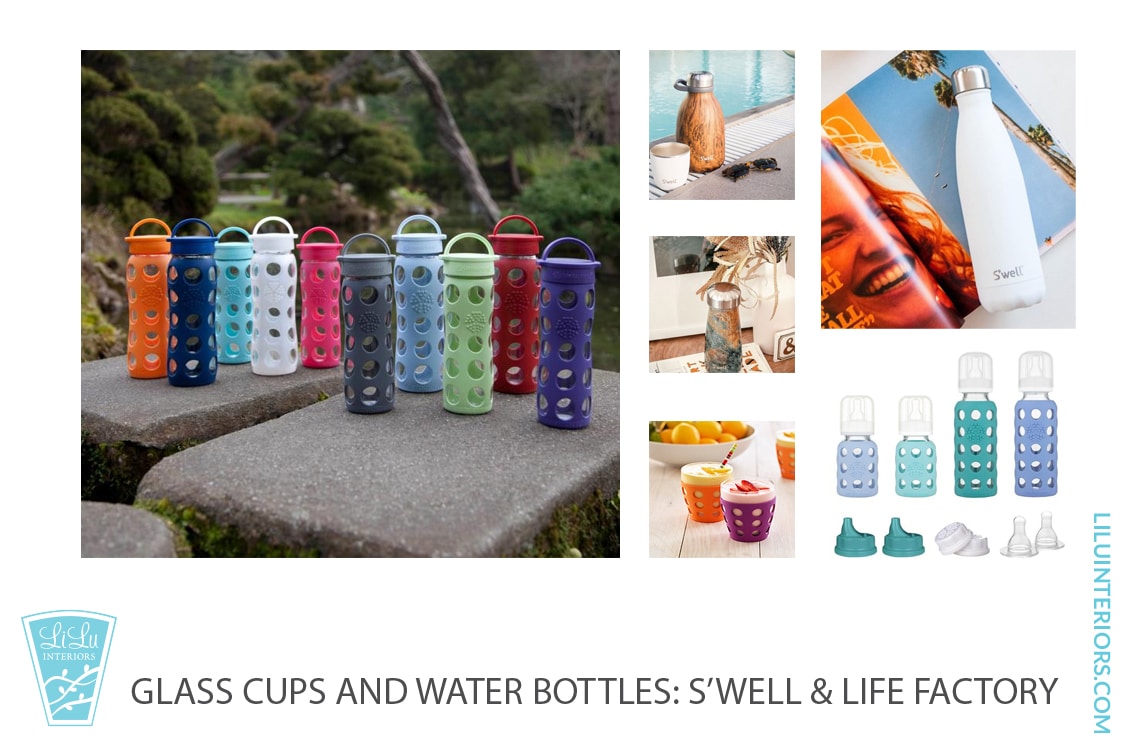
Plastic Bottle Alternative:
Swell: Aluminum water bottles that are both pretty but also keeps liquids cold for up to 24 hours or hot for up to 12 hours. It is BPA free.
“In 2010, I launched S’well with the mission to rid the world of plastic water bottles. I believed that if we made a crave-worthy bottle that combined fashion with function, people would stop buying disposable bottles and we could reduce single-use plastic consumption worldwide. It was an audacious goal, but I knew the world needed S’well.” -Sarah Kauss
What makes Swell unique?
- Silicon covered glass water bottles ad cups
- -Safe, simple and smart. A product that is dishwasher safe that doesn’t shatter easily and doesn’t contribute to the single use plastic landmass
- “Lifefactory was born in 2007 when a pediatric feeding specialist and an integrative designer joined together to develop a line of health-minded, design-forward baby bottles. The Company has grown and the product line has expanded but the purity of the original vision remains.”
- Provides product to not only adults but babies and children
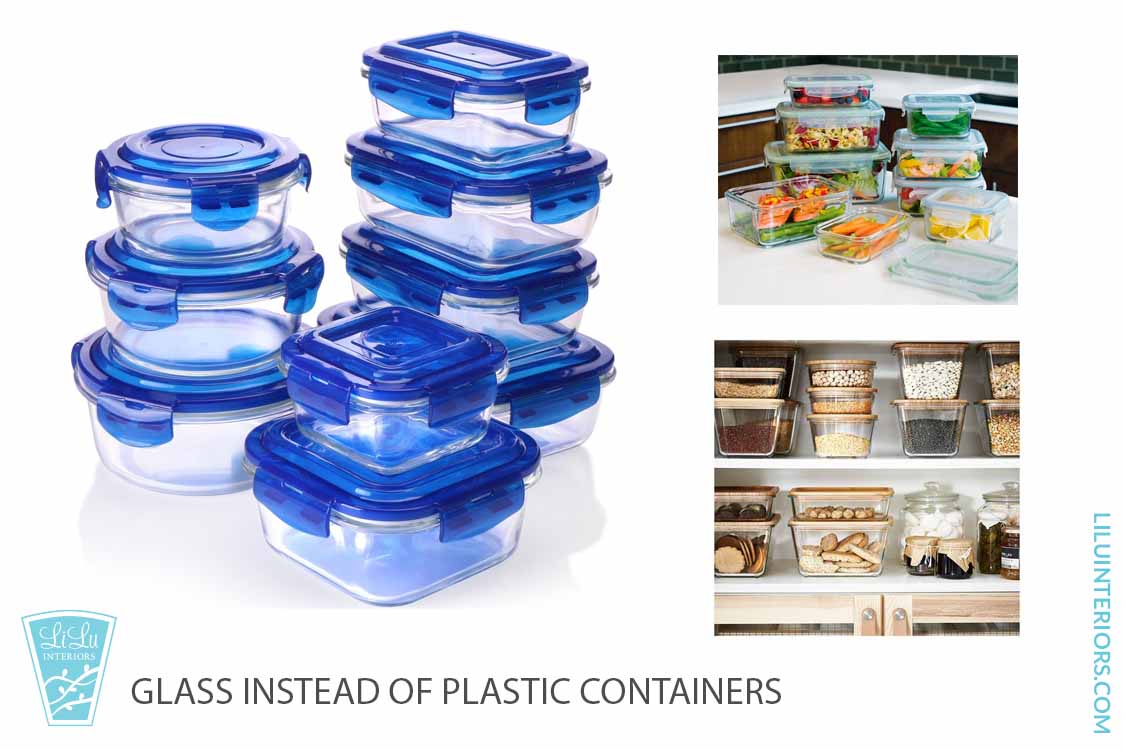
Use glass not plastic
Glass does not require any added chemicals that can be transferred to food, making it microwave safe. Plastic cannot have heat applied and it is not recommended to use the dishwasher with plastic container because it can release toxic chemicals that were dormant. Glass is dishwasher safe and in most cases is oven safe. Glass also cannot hold smell making it odorless. This is because glass has a non-porous surface making it also more germ free and scratch proof. Like plastic glass can be reused. Recycling glass is better for the environment because it saves energy, reduces the need to mine or gather new materials to create more glass, and reduces pollution. Glass is one of the long-lasting materials that can take millions of years to break down.
Here are some fun products to use:
Ikea Glass containers: https://www.ikea.com/us/en/catalog/products/70359203/?msclkid=733584811d4612b4cb5cd8790a44f9fb
Microwave safe, oven safe, dishwasher safe
Container store: https://www.containerstore.com/s/kitchen/food-storage/glass-ceramic/glasslock-round-food-containers-with-lids/123d?productId=10032211
Microwave safe, oven safe, dishwasher safe
No budget for glass?
Fun tip...save glass jars, dressing botttles basically anything that is glass can be washed out, sanitized and have another life for your food storage. Reuse is the best way to get started!
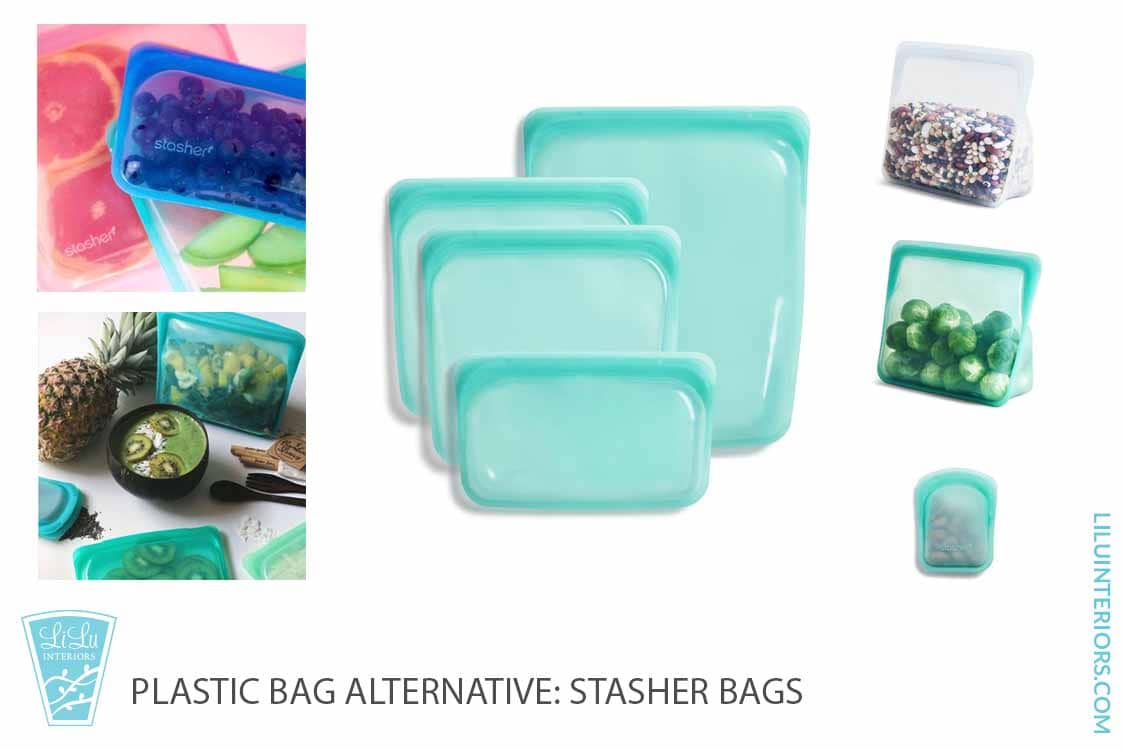
Alternative to Plastic Bags
I find plastic bags to be the one area of food storage that make me cringe. This is both the zip lock bags and grocery bags. We all know to bring re-useable bags to the store with us and why this is important. If you don't, let me know and let's chat or just google it. WHen it comes to zip lock bags, the reason I cringe is because often they have a very short life and are just put in the trash. I wash my plastic bags and re-use them as much as possible. It can be time consuming so I know that is not for everyone. Lucky for us there is a solution!
Stasher Bags: a little back story
“A rebel and someone who has always questioned the status quo: that’s Kat Nouri, CEO and Founder of Stasher. Her airtight, reusable silicone bag — that you can cook, store, and freeze — has disrupted the food storage industry and prevented millions of single-use plastics from piling up in landfills and polluting our oceans….
In 2005, she started Modern-twist, elevating food-grade silicone as a safe, luxe product for tabletop, baby, and kids. But as a pioneer in the plastic-free movement for the past decade, she was constantly in search of better alternatives to single-use plastic bags and containers. “A big turning point was when I got involved with other mission-driven social entrepreneurs who believe it’s up to manufacturers to create responsible products. This drove me beyond my own ambitions to take action,” she explains.
And that’s when Stasher was born. “I built the company that I wished existed, centered on positivity, activism, wellness, and transparency.” And it’s not just talk. As a Certified B Corporation and a 1% for the Planet business partner, Stasher takes pride in accountability. The company supports non-profits in environment conservancy and female empowerment through philanthropy, volunteering, and community activism.”
Where does your plastic go?
A great article to get you started: http://oceancrusaders.org/plastic-crusades/plastic-statistics/
“It is now believed that there are 5.25 trillion pieces of plastic debris in the ocean. Of that mass, 269,000 tons float on the surface, while some four billion plastic microfibers per square kilometer litter the deep sea.”
The average person throws away 72.99 pounds of durable plastic, 6.75 pounds of plastic plates and cups, 6.50 plastic bags and garbage bags, 17.77 pounds of plastic water bottles,28.22 non durable plastics per year. These alternatives provide substitutes to reduce the plastic that goes into landfill and the ocean. It is also important to recycle, one thing people do not know is you cannot recycle anything that has food on it. Any paper that has food on it needs to be thrown away and cannot be recycled, it is important to wash your things before you throw it into the recycling bin.
Again, we can do anything to help. Changing a few habits and ways can make a significant difference!
Inspired by this month's Healthy Home Tips. Catch up on some of these blogs for other Super Fun Tips and Information!
Intentional Clean and Safe Home Tips: Cleaning Products
Healthy Home Tips for Intentional Clean and Safe Living-Eliminating VOC’s in your Building Materials
Healthy Home Tips for Intentional Clean and Safe Living – Indoor Plants
